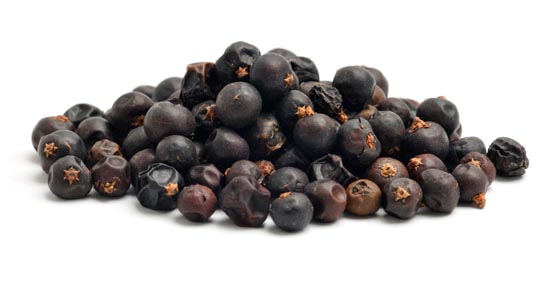
Name: Juniper Berry (Juniperus communis)
Family: Cupressaceae
Common Names: Common juniper, ginepro, enebro
Range: Native to North America, Europe, Asia and northern Africa. Juniper is Ireland’s most abundant species of tree.
Parts Used: Fruits
Preparations: Capsules, liquid extract, essential oil.
History: Juniper berries are the bright, blue-purple fruits of the common juniper tree. However, although they look like berries, they are actually a type of conifer cone. Because of the presence of pinene, juniper berries have a mild pine-like scent and flavor with a slight note of citrus. One of the only spices obtained from a cone, juniper berries were used by Native Americans as a flavoring agent and to curb hunger pangs during times of famine. Today, juniper berries are used in Europe to season roasted meats and vegetables, especially dishes that contain pork, cabbage or sauerkraut. In Finland, a beer made from various grains includes juniper berries as a substitute for hops. Juniper berries also lend flavor to distilled gin.
Constituents: Juniper berries contain catechin tannins, diterpenes, oligomeric proanthocyanidins and up to 30 percent monosaccharides. Because some of these compounds inhibit cyclooxygenase, juniper berry is traditionally used to treat inflammatory disorders, such as arthritis. Juniper berries are currently being studied as a potential medicine to help improve insulin production and release from the pancreas. The berries are also used in perfumery, aromatherapy and in jewelry making.
Cautions/Contraindications: Because of the risk of renal toxicity from alpha and beta-pinene, internal use of the berries is not recommended. Topical application of preparations made from juniper berries may produce allergic reaction or burns when applied directly to the skin. To ease muscle and joint pain from inflammation, the essential oil or a strong tea made from juniper berries is added to warm bath water.
Disclaimer: This information has not been evaluated by the U.S. Food and Drug Administration and is not intended to diagnose, treat, cure, or prevent any disease.